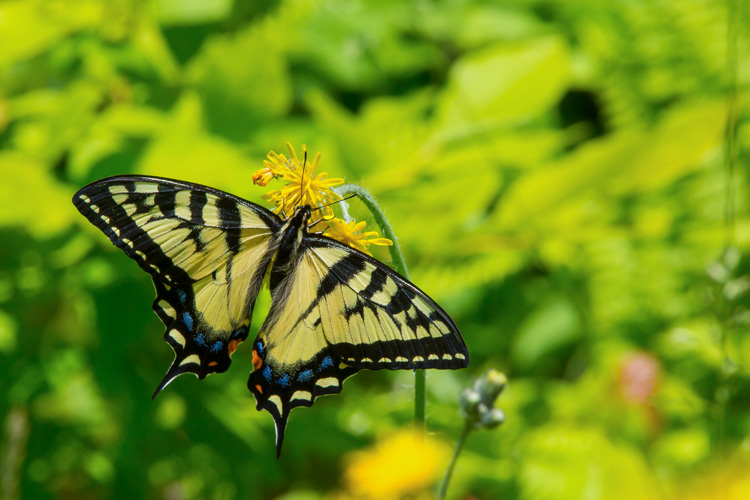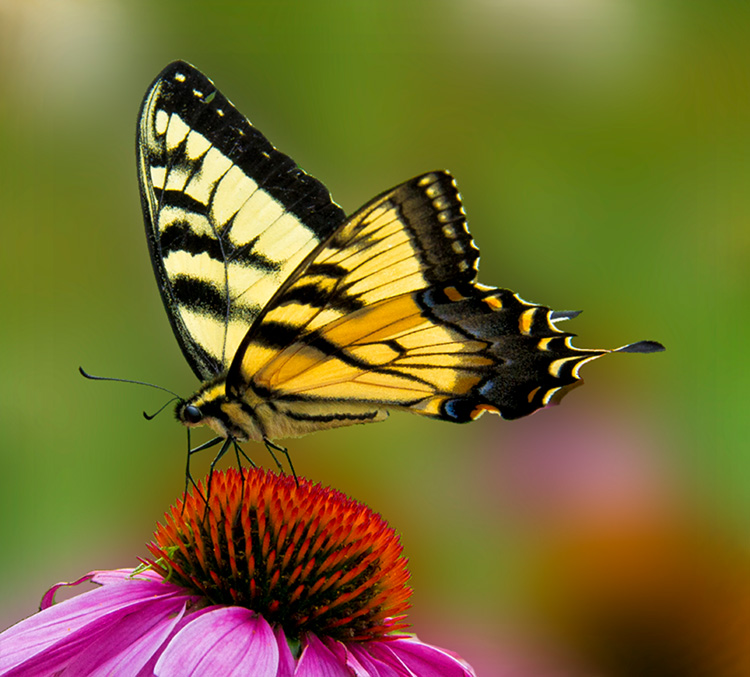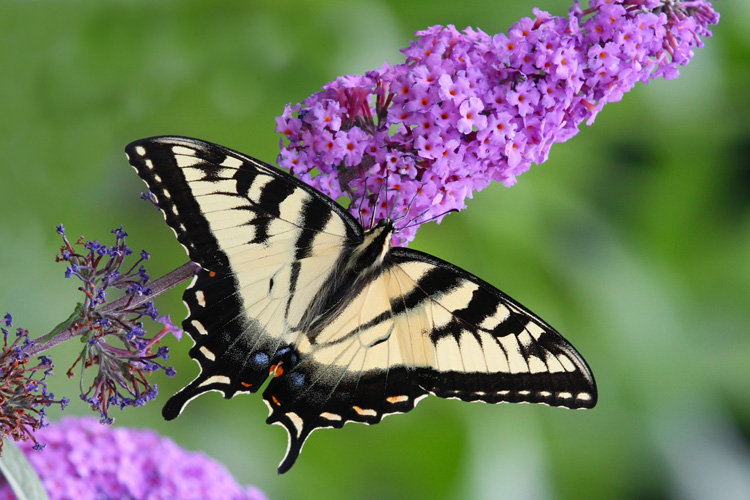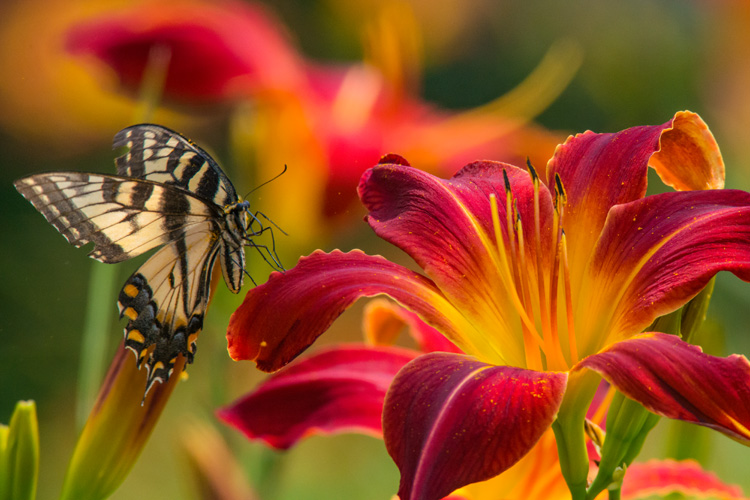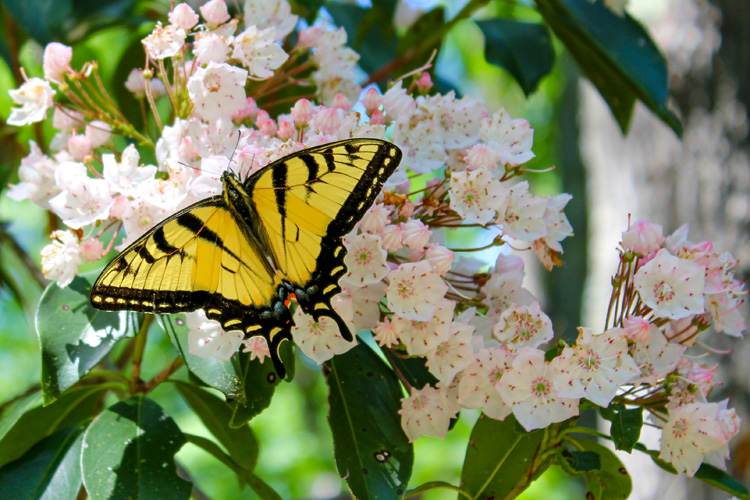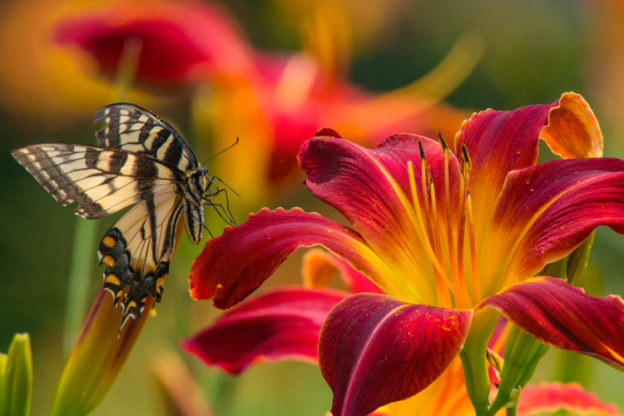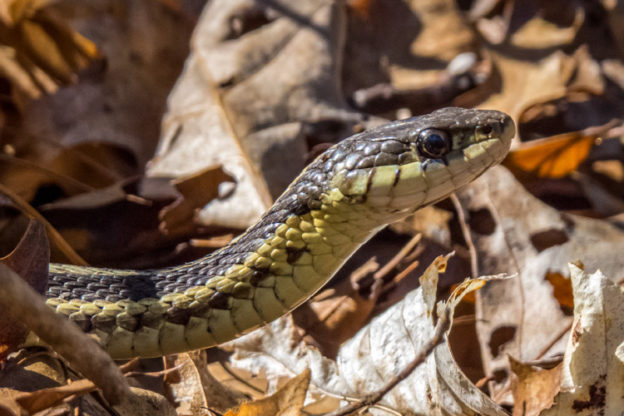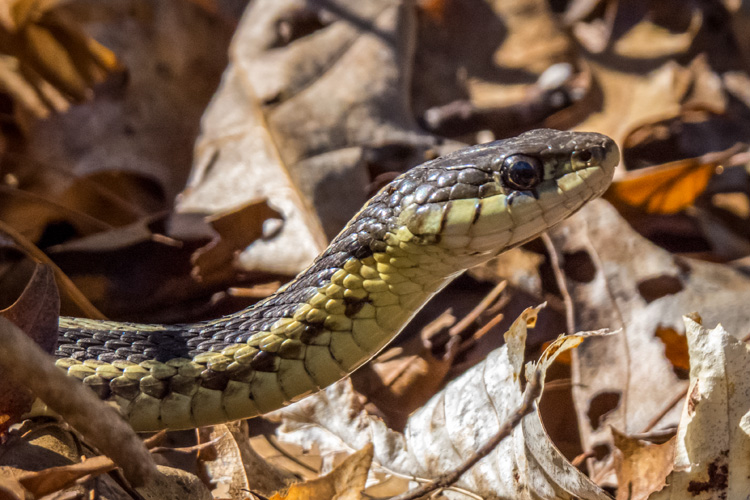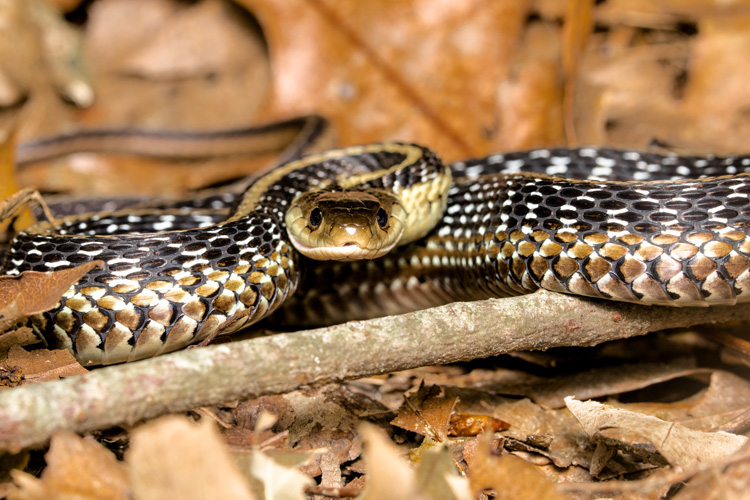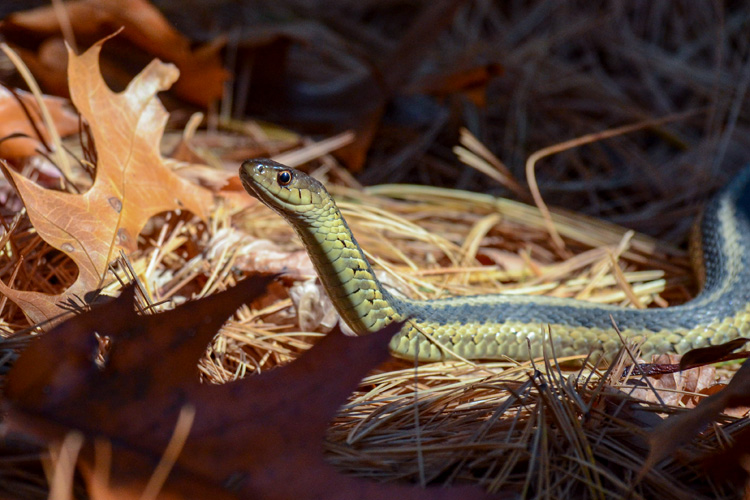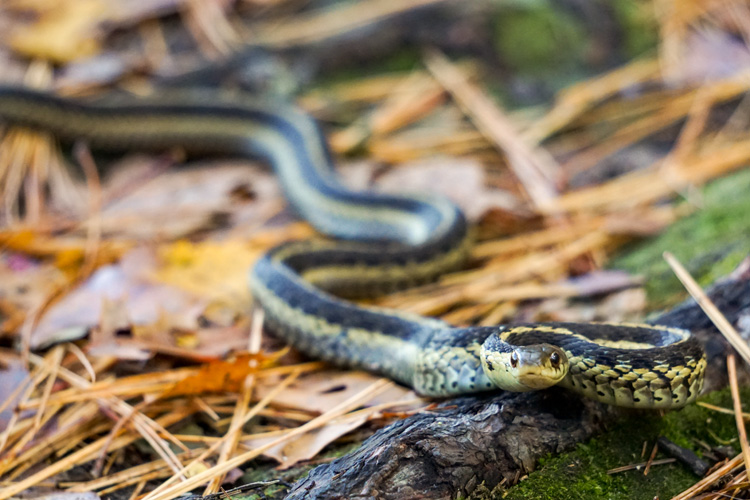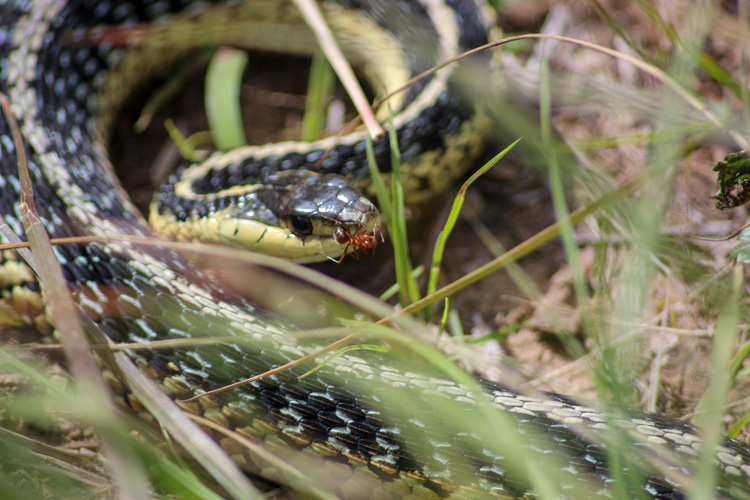The Eastern Tiger Swallowtail butterfly (Papilio glaucus) is one of the most common and easily recognizable butterflies in Massachusetts. Both males and females will have broad, yellow wings edged with black as well as four of their namesake black “tiger stripes” along each of their forewings. Females have an extra swash of shimmery blue along their tales that the males lack. Interestingly, females may also come in an uncommon “black morph” where black or dark gray replaces yellow on the wings—a genetic phenomenon called “dimorphic coloration.”
Tiger swallowtails are large, with wingspans stretching from 3–5.5″. They are typically solitary, but if you’re lucky, you may encounter a vibrant swarm of young males fluttering around a mud puddle or birdbath, drinking the water and absorbing minerals needed for reproduction, a behavior known as “puddling.”
June 22–28 is National Pollinators Week! Habitat loss, pesticide use, and other factors threaten many of the butterfly species we cherish, along with many of our other native pollinators, including bees, bats, birds, and beetles. Learn about creating a pollinator garden and other ways you can help pollinators, including butterflies, on our website.
To honor some of nature’s most colorful and celebrated pollinators, here is a collection of Tiger Swallowtail photographs from our annual Picture This: Your Great Outdoors photo contest. The 2020 photo contest is now open, so submit your nature photos today!
